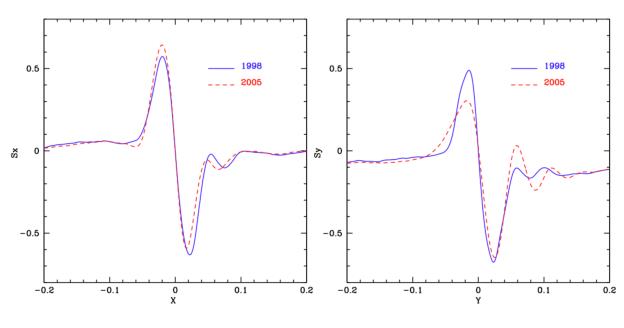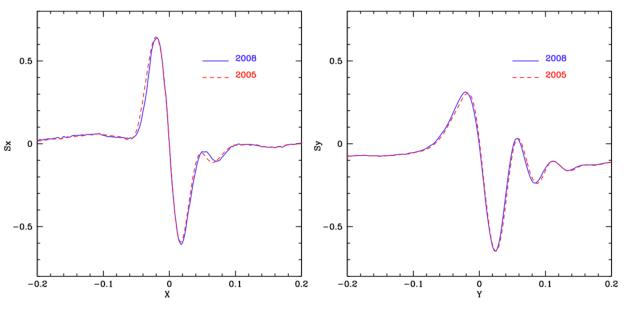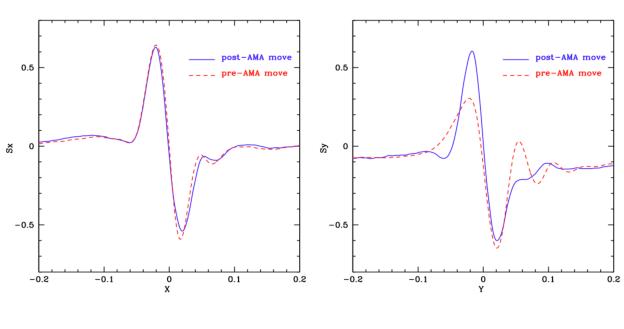2.5 The FGS1r Articulated Mirror Assembly
FGS1r has been improved over the original FGS design by the insertion of the articulating mirror assembly (AMA) designed and built by Raytheon (formerly Hughes Danbury Optical Systems, currently BFGoodrich Space Flight Systems). A static fold flat mirror (FF3 in Figure 2.1) in FGS1r was mounted on a mechanism capable of tip/tilt articulation. This Articulating Mirror Assembly (AMA) allows for in-orbit re-alignment of the wavefront at the face of the Koesters prism. An adjustable AMA has proven to be an important capability since, given HST’s spherical aberration, even a small misalignment degrades the interferometric performance of the FGS. On orbit testing and adjustment of the AMA were completed during FGS1r’s first year in orbit. A high angular resolution performance test executed in May 1998 demonstrated the superiority of FGS1r over FGS3 as a science instrument. Therefore, FGS1r has been designated the Astrometer and has replaced FGS3 in this capacity. Information on the FGS1r calibration program can be found in Chapter 5.
The AMA has been adjusted to yield near-perfect S-Curves at the center of the FGS1r FOV, and an optimum compromise results for the remainder of the FOV. The variation of S-Curve characteristics across the FOV arises from “beam walk” at the Koesters prisms as the star selectors rotate to bring the IFOV to different locations in the FGS FOV. This field dependence does not necessarily impair FGS1r’s performance as a science instrument, but it does restrict Transfer mode observations to the center of the FOV since it is the only location calibrated for that mode (Position mode is calibrated for the entire FOV).
The FGS1r S-curves were seen to degrade over time between 1998 and 2005, particularly along the Y-axis, as shown in Figure 2.7.
Figure 2.7:FGS1r S-curves
However, since 2005 the S-curves changes were insignificant, as shown in Figure 2.8
Figure 2.8:FGS1r S-curves 2005
Figure 2.9:Shows the changes in the FGS1r S-curves resulting from the January 2009 AMA adjustment.


